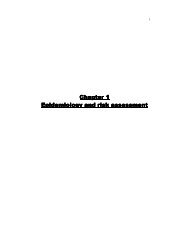Pan Arab Journal of Oncology - Arab Medical Association Against ...
Pan Arab Journal of Oncology - Arab Medical Association Against ...
Pan Arab Journal of Oncology - Arab Medical Association Against ...
You also want an ePaper? Increase the reach of your titles
YUMPU automatically turns print PDFs into web optimized ePapers that Google loves.
cancer care in the arab world | march 23-25, 2010 | riyadh, ksa <<br />
THE ROLE OF MRI ON CANCER DETECTION AND MANAGEMENT:<br />
THE SAUDI ARABIAN EXPERIENCE<br />
Aldabbagh A. 1<br />
(1) King Abdulaziz University Hospital, Jeddah, KSA<br />
Corresponding Author: Pr<strong>of</strong>. Dr. Asma Aldabbagh<br />
Pr<strong>of</strong>essor and Consultant in Radiology, Radiology Department<br />
Faculty <strong>of</strong> Medicine & Allied Sciences, King Abdulaziz University Hospital<br />
P.O. Box 80215, Jeddah 21589, Kingdom <strong>of</strong> Saudi <strong>Arab</strong>ia<br />
Introduction<br />
MRI is increasingly being used as a problem solving tool; Examination timing,<br />
indications, and technique are critical to its success. It is particularly useful in<br />
mammographically-dense breasts, patients presenting with abnormal axillary<br />
nodes, the post-operated breast and to monitor neoadjuvant therapy response. It<br />
has also been recommended for screening high risk patients.<br />
Disease Epidemiology<br />
Breast Cancer in Saudi <strong>Arab</strong>ia is the most common cancer in women. National<br />
screening is as yet not implemented. Most women usually come because <strong>of</strong><br />
symptoms. Many <strong>of</strong> the cancers discovered are at an advanced stage.<br />
Screening Methods Overview<br />
Although mammography remains the primary imaging modality for the detection<br />
and evaluation <strong>of</strong> breast cancer, additional imaging is usually required to further<br />
stage the disease so that preoperative or other management strategies are planned.<br />
MRI is superior to other modalities in the detection <strong>of</strong> occult disease in the same or<br />
contralateral breast. MRI is also superior than other breast imaging modalities in the<br />
evaluation <strong>of</strong> the post operative breasts, monitoring neoadjuvant chemotherapeutic<br />
response and in the assessment <strong>of</strong> high risk patients.<br />
In our hospital, 1226 patients had breast MRI examinations. 406 patients were<br />
thought to have malignant lesions based on MRI findings. 298 cases were<br />
histopathologically proven malignancies. Of the proven malignant cases, 28<br />
patients gave a family history <strong>of</strong> breast cancer. 71 patients continued their<br />
investigations elsewhere and histopathology results were not available. 35 cases<br />
were false positive. Only 2 cases were false negative. Breast cancer recurrence<br />
was diagnosed by MRI in 42 patients, 8 <strong>of</strong> those were histopathologically negative<br />
for malignancy. Only a few patients were monitored by MRI during the course<br />
<strong>of</strong> their Neoadjuvant therapy.<br />
Outcome and Recommendations<br />
• Contrast-enhanced MRI has a high sensitivity and a high negative predictive<br />
value for the detection <strong>of</strong> invasive breast cancer.<br />
• It is superior to mammography and sonography for the detection <strong>of</strong><br />
recurrence.<br />
• Breast MRI should be interpreted in conjunction with other breast imaging<br />
modalities.<br />
• Patients' history with dates <strong>of</strong> previous treatments should be given.<br />
• As with mammography, previous MRI studies availability is helpful.<br />
• It is also logical that lesions found only on MRI are biopsied under MRI<br />
guidance, a situation which is difficult to undertake in most hospitals if a<br />
dedicated breast MRI unit is not available.<br />
• MRI should be used to screen high risk patients.<br />
• MRI has made a significant impact on breast cancer detection and management<br />
in our practice.<br />
References<br />
1. Christiane K. Kuhl, Current Status <strong>of</strong> Breast MR Imaging. RSNA, 2007.<br />
2. Laura Liberman et al, Breast Lesions Detected on MR Imaging: Features and<br />
Positive Predictive Value, AJR 2002; 179:171-178.<br />
3. Elizabeth Morris, Laura Liberman, Breast MRI Diagnosis and Intervention.<br />
4. Constance D. et al. Cancer Yield <strong>of</strong> Mammography, MR, and US in High-Risk<br />
Women: Prospective Multi-Institution Breast Cancer Screening Study. Radiology<br />
2007;244:381-388.<br />
5. Ansgar Malich et al, Potential MRI Interpretation Model: Differentiation <strong>of</strong><br />
Benign from Malignant Breast Masses. AJR 2005; 185:964–970<br />
20 > <strong>Pan</strong> <strong>Arab</strong> <strong>Journal</strong> <strong>of</strong> <strong>Oncology</strong> | vol 3; issue 1 | March 10 www.amaac.info









